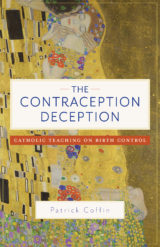By Patrick Coffin
Patrick Coffin is the author of several books, including The Contraception Deception: Catholic Teaching on Birth Control, a comprehensive assessment of the Church’s sexual ethic. He is the host of The Patrick Coffin Show podcast, heard in over 100 countries.

In the United States, Canada, and most of Europe, young parents violate an unwritten taboo when they have a third or fourth child, drawing the gossipy stares and tsk-tsks of those whom one perceptive mom has called “the fertility police.” Usually it’s in the form of well-meant ribbing (“Hey, do you guys know what you’re doing?” “They have pills for that, you know,” and so on), but the barbs can be downright rude. Why is it anyone’s business? Parents might ask the joker, “Which of my kids would the world be better without?”
Here are a few fast facts debunking the most common myths people use to argue against openness to big families.
Fact 1: World population growth is slowing down at an alarming rate. United Nations figures show that the seventy-nine countries that make up 40 percent of the world’s population now have fertility rates well below replacement level.
Fact 2: 46 percent of the earth is still pristine wilderness, undeveloped, and nearly unpopulated. This area, roughly sixty-eight million square miles, is home to only 2.4 percent of the world’s population.
Fact 3: The population of the entire world, at the printing of this book, could fit into the State of Texas with each person living on almost a third of an acre. This fact alone disproves the image of the earth’s surface brimming with sardine-like humanity.
Fact 4: Africa is often held up as incontrovertible evidence that overpopulation causes poverty, or, according to the opposite theory, is caused by poverty. But Africa has only one-fifth the population density of Europe. According to estimates by Roger Revelle, former director of the Harvard Center for Population Studies, and research by the University of California at San Diego, the continent of Africa has an unexploited agricultural capacity to feed twice the present population of the world.
Fact 5: A 2005 Statistics Canada study, describing Canada’s population plunge as an “unprecedented situation,” revealed that Canada is aging so fast that senior citizens over sixty-five will outnumber children under fifteen a decade from now.
Fact 6: Japan recently experienced its first ever drop in overall population owing to its very low 1.3 fertility level, as 70 percent of young Japanese women now report having no interest in marrying. In the last decade, ninety theme parks for children in Japan have disappeared, and several thousand elementary schools and pediatric hospitals have closed.
Fact 7: While all the European nations’ birthrates have spiraled dramatically down, the German Federal Statistics Office reports that Germany has remained below the replacement fertility rate (1.36) for so long that it has reached the point of no return, a situation that can no longer be countered by immigration.
Fact 8: Russia’s population drops by almost 750,000 people yearly. President Vladimir Putin has called Russia’s birth dearth “the most acute problem facing the country.” Attempts at a remedy have included cash incentives for having more than one child (as is done in Quebec), special pensions for extra fertile mothers, and the Day of Conception, held annually on September 12 in the Ulyanovsk region. The contest provides a day off for patriotic couples to do what comes naturally—in order to win cash prizes, refrigerators, and SUVs. I kid you not.
Fact 9: By 1900, Russian women bore an average of seven children over a lifetime. At the collapse of the Soviet Union, this had dropped to 1.7.
Fact 10: Many of the world’s most densely populated areas also happen to provide high levels of per capita wealth and economic stability, such as The Netherlands, Japan, Singapore, Taiwan, and Hong Kong. South Korea’s population density is 3.6 times higher than China’s, yet boasts a per capita output twelve times greater.
Fact 11: Executive management and economic guru Dr. Peter Drucker, author of over thirty books on economics and business leadership, says, “the most important single new certainty—if only because there is no precedent for it in all of history—is the collapsing birthrate in the developed world.”
Fact 12: Despite having a higher average TFR (total fertility rate) than most western countries, the overall fertility rates in the United States have fallen steadily since 1801, with the exception of the post-World War II baby boom, which peaked in 1957.
Fact 13: Advances in agricultural science have made obsessions over food shortages moot. The Food and Agricultural Association reports that, at present, farmers use less than half of the world’s arable land. “The conversion of land to urban and built–up uses to accommodate a larger population will absorb less than 2 percent of the world’s land, and ‘is not likely to seriously diminish the supply of land for agricultural production,’ according to Paul Waggoner, writing for the Council for Agricultural Science and Technology in 1994.”
Fact 14: Most people have never thought about where their logic leads them. The next time a Chicken Little in your life plays the overpopulation card, turn it around and ask him how few people on earth would be ideal, and why.
You Might Also Like

The Contraception Deception: Catholic Teaching on Birth Control by author Patrick Coffin is a comprehensive assessment of the Church’s sexual ethic. With relevant insight into the development and reception of Paul VI’s landmark 1968 encyclical, Coffin explains why Humanae Vitae is more timely than ever.